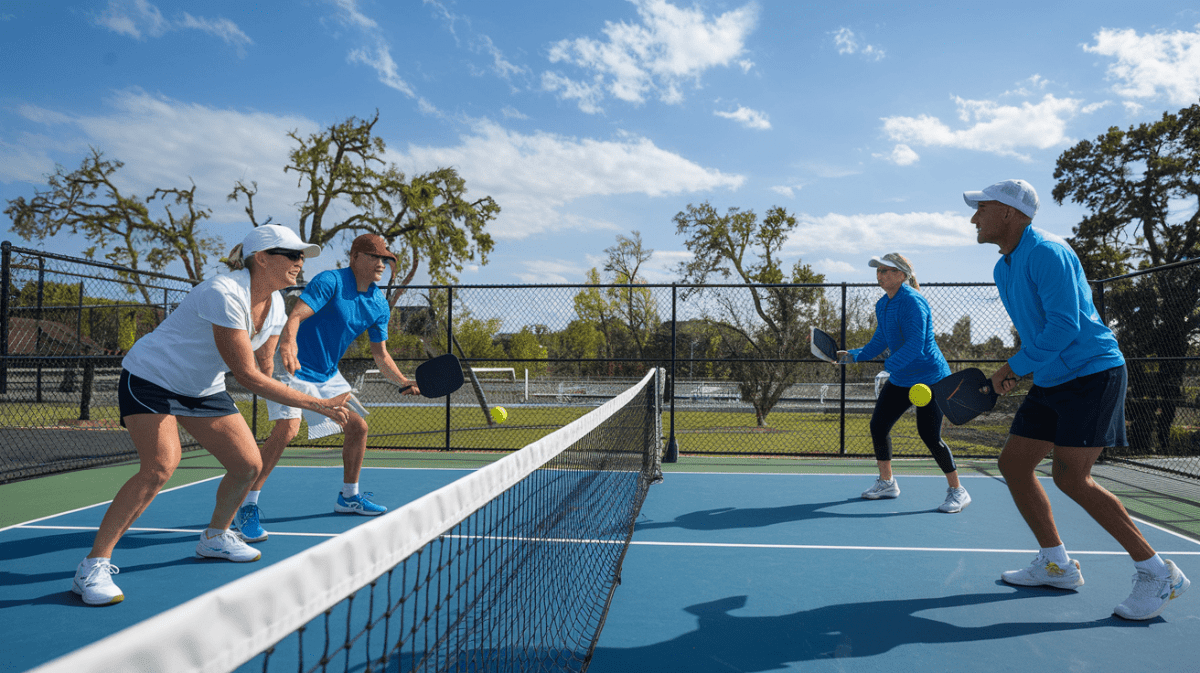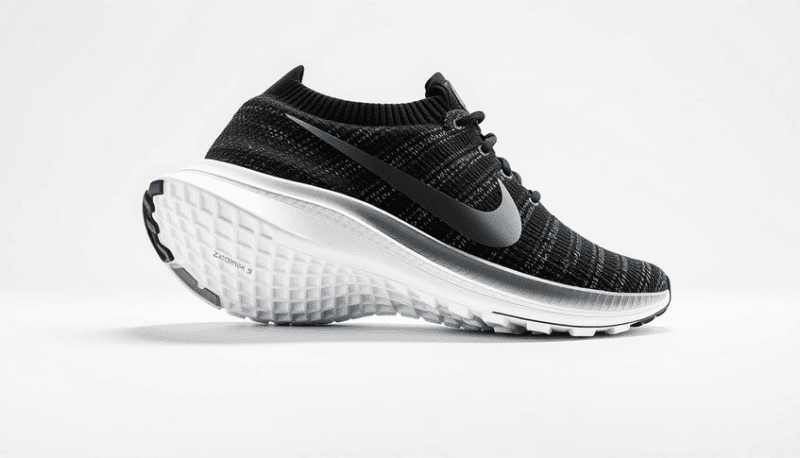(Buyer’s Guide) – Key Features and Expert Tips
Picking the right shoe can make or break your pickleball game—seriously. A good pickleball shoe gives you strong lateral support, solid cushioning, and the kind of traction you need for those quick side-to-side moves. Comfort and stability matter just as much if you want to stay nimble and steady throughout the match.

Let’s be real—not every sneaker can handle pickleball’s speed or the court’s surface. Court shoes made for tennis or pickleball grip better and keep you balanced, unlike those old running shoes. If your shoes fit well and feel good, you’ll avoid tired feet and play better, even if the match drags on.
Key Takeaways
- Good shoe support keeps you safer and lets you move better on court.
- Court shoes grip and balance better than casual sneakers.
- Comfort and the right fit help you play longer without aching feet.
Essential Features of Pickleball Shoes

A solid pickleball shoe blends a few must-haves: it grips the court, supports your foot, softens impact, and actually lasts. You want something that keeps you quick, safe, and comfortable, not just for a game or two but for the long haul.
Traction and Grip
If you want quick starts and stops, traction is everything. Shoes with rubber soles and smart tread patterns grip both indoor and outdoor courts better.
The outsole shouldn’t leave marks but still has to dig into the surface. Herringbone or multi-directional treads are everywhere for a reason—they help you react fast without slipping. That kind of grip keeps you upright, even when you’re pushing your luck with a risky lunge.
Good traction also helps you avoid dragging your toes, which just ruins shoes and hurts. Look for shoes that mix grip with enough flexibility so your feet don’t feel trapped.
Stability and Support
If you can’t stay balanced, you’ll struggle to control your shots. Shoes with strong lateral support—think reinforced sides or a firm heel—keep your foot from rolling when you move sideways.
Arch support matters too, especially for long matches. Structured midsoles (lots use EVA foam) offer that stable feel underfoot.
A roomy toe box gives your toes space, so you won’t get pinched or cramped. Make sure the laces let you lock in the fit without cutting off circulation.
Cushioning and Comfort
Every jump and sudden stop pounds your joints, so you need cushioning that actually works. Most pickleball shoes pack supportive midsoles—usually EVA foam—for a mix of softness and bounce.
Comfort also comes from breathable uppers (mesh is popular), letting your feet breathe so you don’t end up with sweat puddles. A relaxed fit helps avoid blisters and pressure spots, especially when you’re hustling.
You want an insole that cushions without making the shoe feel clunky. Removable insoles are handy if you need custom orthotics or a little extra padding.
Durability and Shoe Materials
Pickleball’s quick cuts and stops beat up shoes fast, so durability’s a big deal. Rubber soles last longer and grip well, but not all rubber is created equal.
Mesh uppers keep things light and breathable, but if you want more protection, go for less mesh and sturdier overlays. Reinforced toes help if you tend to drag your feet.
Look for solid stitching and overlays that keep the shoe’s shape, even after a bunch of games. You want a balance—tough enough to last, but not so stiff you can’t move.
Fit, Sizing, and Comfort Factors

If your shoe doesn’t fit, nothing else matters. You need the right size, breathable materials, and arch support. Miss any of those and you’re looking at sore feet and a lousy game.
Proper Shoe Size and Sizing Charts
Getting the size right is huge. Brands don’t all size the same, so check a shoe sizing chart to find your best fit. Measure your feet at the end of the day when they’re a little swollen—it makes a difference.
The toe box should give you wiggle room, not squeeze. The shoe should hug your foot but not choke it. Both width and length matter, and narrow shoes are just asking for blisters.
If you can, try shoes on before buying. Make sure they feel right around your toes, heel, and sides. If you’re buying online, check the return policy in case you need a different size. It’s just less hassle that way.
Breathability and Lightweight Designs
No one likes sweaty feet. Mesh uppers or ventilation holes let air in and keep things dry.
Lighter shoes mean less fatigue and faster moves. Heavier shoes just slow you down when you need to dart across the court.
Look for lightweight materials that still support your feet and last a while. You want comfort and breathability, but don’t give up stability for it.
Arch Support and High Arches
Arch support keeps your feet from aching and helps you stay balanced. Shoes with built-in support absorb shock and help you avoid injuries.
If you’ve got high arches, you’ll need extra cushioning or special insoles. High arches put more pressure on the heel and ball of your foot, which gets uncomfortable fast.
Always check the shoe’s arch support before you commit. Sometimes you’ll need to add custom or store-bought arch supports, especially if you play for hours.
Performance on Different Court Surfaces
The right shoe depends on the court. You need grip, stability, and protection that match the surface—whether you’re on a hard court or something else. Outsole choice, tread pattern, and ankle support all come into play.
Hard Courts and Appropriate Outsoles
Hard courts chew up shoes, so you want tough outsoles. The Adiwear outsole is a favorite for its abrasion resistance. It just lasts longer against rough surfaces.
The outsole should grip well to keep you from slipping during sudden moves. You want a balance between traction and durability. Court-specific shoes usually have flat, non-marking soles that do well on hard courts.
Tread Patterns for Multiple Surfaces
Tread makes a difference. Indoor courts need tighter, finer treads for smoother movement. For outdoor play, deeper grooves grab onto rougher surfaces better.
Some pickleball shoes use hybrid treads—flat with raised grips—so you can switch between indoor and outdoor courts without losing traction.
Lateral Movements and Ankle Protection
Pickleball has you moving sideways a lot. Shoes for the sport usually add ankle support to help you avoid twists.
Firm collars and extra padding around the ankle stabilize your foot during those fast cuts. If you’ve had ankle issues before, you’ll want shoes with extra reinforcement, but not so much that you can’t move freely.
Comparing Pickleball Shoes to Other Footwear
If you play pickleball, you need shoes that help you move side to side—fast. The right pair offers stability, grip, and cushioning made for the game. Here’s how pickleball shoes stack up against tennis and running shoes, plus a look at a few standout models.
Pickleball Shoes vs. Tennis Shoes
Pickleball and tennis shoes might look alike, but they’re not the same. Tennis shoes are built for bigger courts and longer, more forceful lateral moves. Pickleball shoes focus on agility and quick stops in a smaller space.
Pickleball shoes usually use lighter, more breathable uppers and give you extra lateral support to fight off foot fatigue. Tennis shoes often have tougher outsoles for hard courts, but that can make them heavier.
Models like the Gamecourt 2 target pickleball specifically, finding a sweet spot between grip and flexibility. You can wear tennis shoes for pickleball, but they might feel clunky and less responsive.
Running Shoes for Pickleball: Pros and Cons
Running shoes? Not the best choice for pickleball. They’re made for forward motion, not side-to-side. Most have extra heel cushioning and not much lateral support, which means you’re more likely to twist an ankle during a quick move.
Some folks use running shoes if they play just occasionally. Still, even running shoes like the Express Light Pickleball Shoe (which borrows some court features) aren’t as stable as real pickleball or tennis shoes.
Running shoes win on breathability and comfort, but they just don’t have the traction or toughness you need for pickleball courts. Stick with them too long, and you’ll probably have sore feet or worse.
Recommended Models and Brands
The Viper Court Pro stands out as a pickleball shoe with a solid grip and a cushioned sole. You’ll get decent lateral support here, and thankfully, it doesn’t feel clunky or weigh you down.
If you’re after something light and breathable, the Express Light Pickleball Shoe fits comfortably and gives enough traction for both indoor and outdoor courts. Not bad for all-around play.
The Gel-Renma Pickleball Shoes focus on shock absorption. They’re a solid pick for anyone who needs extra comfort, especially during longer games—your feet might thank you later.
ASICS, New Balance, and Wilson usually put out specialized pickleball or court shoes that blend stability, cushioning, and grip. Honestly, grabbing a pair designed for pickleball or court sports can help lower your injury risk and might even boost your performance. Why settle for less?



